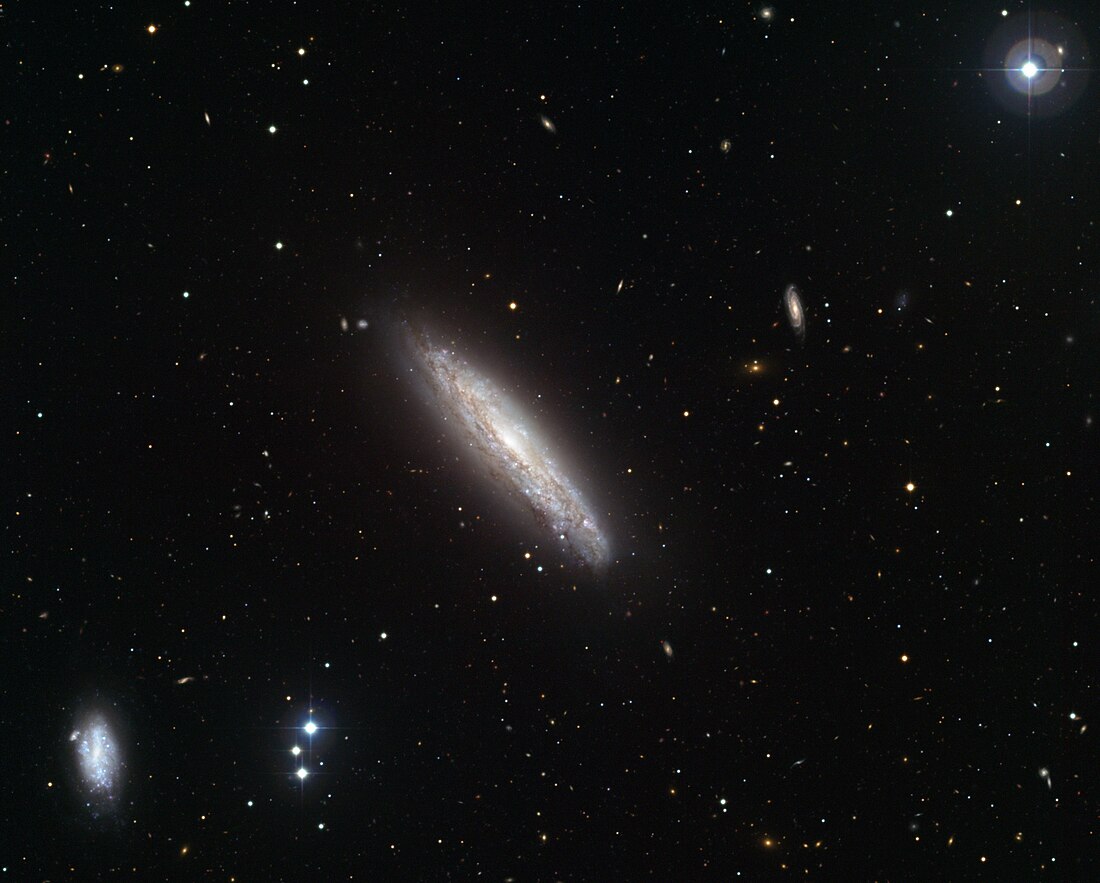Top Qs
Timeline
Chat
Perspective
NGC 4666
Spiral galaxy in the constellation Virgo From Wikipedia, the free encyclopedia
Remove ads
NGC 4666 is a spiral galaxy in the equatorial constellation of Virgo, located at a distance of approximately 55 megalight-years from the Milky Way.[3] It was discovered by the German-born astronomer William Herschel on February 22, 1784. It is a member of the Virgo II Groups, a series of galaxies and galaxy clusters strung out from the southern edge of the Virgo Supercluster.[6][7] John L. E. Dreyer described it as "bright, very large, much extended 45°±, pretty suddenly brighter middle".[8] It is a member of an interacting system with NGC 4668 and a dwarf galaxy,[9] and belongs to a small group that also includes NGC 4632,[2] that is known as the NGC 4666 Group.[10][11]
The morphological classification of this galaxy is SABc, which indicates a weak bar around the nucleus with moderately wound spiral arms. Viewed nearly edge-on, its galactic plane is inclined at an angle of 85°±2° to the line of sight from the Earth, with the major axis aligned along a position angle of 40°. There is an active galactic nucleus that shows a modest level of activity and is most likely heavily obscured by gas and dust. The central point source has been detected in the radio and X-ray bands.[2]
This is a starburst galaxy that is noteworthy for its vigorous star formation, which creates an unusual superwind[12] of out-flowing gas. This wind is not visible at optical wavelengths, but is prominent in X-rays, and has been observed by the ESA XMM-Newton space telescope.[13] The estimated star formation rate is 7.3 M☉ yr–1, with a density of 8.9×10−3 M☉ yr−1 kpc−2. Unlike in many other starburst galaxies, the star formation is spread across the disk rather than being more concentrated.[2]
Remove ads
Supernovae
Three supernovae have been observed in NGC 4666:
- SN 1965H (Type IIP, mag. 14) was discovered by Enrique Chavira on 23 May 1965.[14][15]
- ASASSN-14lp (Type Ia, mag. 14.3) was discovered by ASAS-SN on 9 December 2014; it was located 12″ from the center of the galaxy.[16][17]
- SN 2019yvr (Type Ib, mag. 15.882) was discovered by ATLAS on 27 December 2019.[18][19] It has a 0.005 redshift. Images of the location of the supernova before the explosion showed the progenitor star was ~19M☉.[20]

Remove ads
References
External links
Wikiwand - on
Seamless Wikipedia browsing. On steroids.
Remove ads

